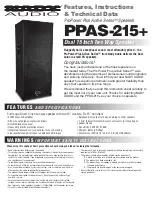
Table I presents JBL's system recommenda-
tions based on general assumptions regarding
room ratios and reverberation times. All the
theater dealer or contractor has to do is
calculate the room volume and go to that entry
in the table. The mid-house levels are those
calculated by assuming that the reverberant
sound in the theater and the direct sound from
the loudspeakers are equal. Beyond that point,
the sound level will drop off somewhat, while
in front of that point the sound will be louder.
Details of the various JBL systems recom-
mended for single channel use in multiplex
theaters are given in Figure 1. The choice
between several systems, all of which might
meet the specification, must be based on a num-
ber of considerations. In general, the models
4672A and 4674A will result in less amplifier
power requirement; however, these systems begin
to roll off below 120 Hz, while the models 4671
and 4673 extend smoothly down to 45 Hz. Another
consideration is enclosure depth. The space be-
hind some screens can be as small as 0.6 meter
(2 feet), and this often dictates system choice.
4. System Installation:
Whenever possible, the screen loudspeaker
should be located one-third the way up the screen.
Should the screen itself be higher than usual,
requiring patrons seated toward the front of the
house to look upward, then the loudspeaker may
be placed somewhat lower. As a rule, the loud-
speaker high-frequency element should be aimed
toward the farthest seats. This is certainly the
way to go if the back wall is draped. If it
cannot be draped, then tilting the system down
a bit may help. The system should be placed as
close as 0.3 meter (1 foot) to the screen to
minimize the effect of high-frequency sound
reflecting between the screen and the wall be-
hind the loudspeaker. If possible, the wall area
behind the screen should be treated with sound
absorptive material. See Figure 2 for details of
this.
Most of the wire runs in a theater will be
short enough so that a wire gauge no greater
than AWG #12 will be required. All JBL theater
systems should be considered as 8-ohm systems
in making line loss calculations, and the general
rule is that line losses should be held to no
greater than 0.5 dB. Table II shows line losses
for various runs and gauges.
The theater dealer should always try to speci-
fy a stereo amplifier which can be bridged for
mono operation. Care must be taken that the
amplifier's bridged mono rating into 8 ohms will
not be exceeded.
C. Systems for Larger Houses:
1. Choosing the system:
Figure 3 shows the JBL systems normally
specified for multi-channel use in theaters.
Note that these systems all make use of Bi-Radial
high-frequency horns. The models 4675 and
4676A-1 make use of the 2360 90-by-40 degree
horn for normal coverage, while the 4676A-2
uses a pair of 2365 60-by-40 horns splayed for
90-degree coverage.
Of these three systems, the 4675 will be the
most useful because it exhibits the smoothest
power response of any system that JBL makes.
This is, in fact, the one that has become well
known in film production circles as "JBL's new
theater system."
Table III will enable the theater dealer to
specify and choose power for these systems in
larger theaters. The powers given for each loud-
speaker enable each channel to reach a level of
100 dB in the house. Depending on the exact na-
ture of the multi-channel installation, the
behind-the-screen resources may be five full-
range channels, or three full-range channels and
two low-frequency augmentation channels.
2. Powering the system:
With these larger systems, we have the option
of biamplification. While this is more expensive
than the normal single amplifier approach, it does
result in far cleaner sound on peaks by making it
impossible for low-frequency signals to modulate
high-frequency signals. Figure 4 shows the two
ways that these larger systems can be imple-
mented electrically.
Biamplification allows considerably more
power to be delivered to the LF portions of theater
systems, since the passive dividing network is
being bypassed. Biamplification should certainly
be considered essential if the theater installation
is intended for playback at levels in excess of
100 dB.
3. Installation of the system:
As we stated earlier, it is customary for
screen loudspeakers to be located about
one-third the way up the screen and as close
as 0.3 meter (1 foot). The center loudspeaker
should be normal to the screen, but the flank-
ing loudspeakers may be toed in slightly, as
shown in Figure 5, in order to ensure even
coverage, and consequently better stereo, for
those patrons seated off to one side.


































